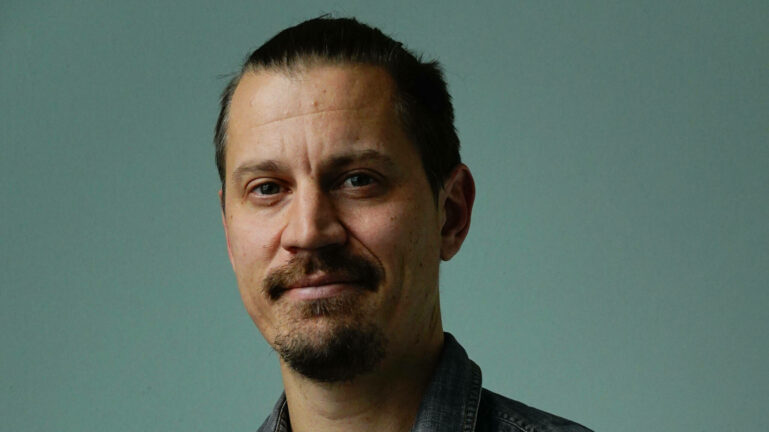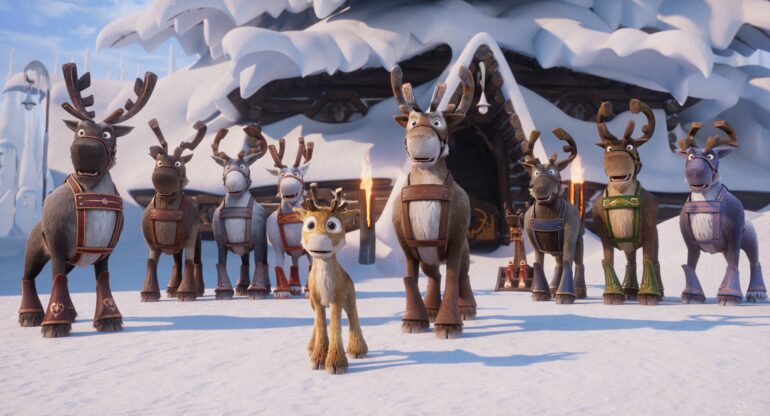WRITTEN BY: Geoffrey Macnab
How an indie Finnish CGI animation outfit founded by three pals from art school turned into a major beast in Nordic animation thanks to a series of features about a flying reindeer.
When Antti Haikala, Jani Kuronen and Olli Rajala set up Anima Vitae in 2000, there weren’t any other obvious pathways into the animation industry - so they set up their own company.
The outfit’s debut full length feature, 2008’s Niko and The Way to the Stars , backed by Nordisk Film & TV Fond (NFTVF) and produced with Cinemaker; Germany’s Ulysses; A. Film in Denmark; and Ireland’s Magma Films, was sold to an astonishing 120 countries.
The latest in the franchise, Niko: Beyond The Northern Lights, handled internationally by Global Screen, has just been completed - and a Niko series is now in the pipeline.
Over the last 25 years, the company has worked on many high profile service productions (among them series like Moominvalley and Angry Birds Stella) as well as continuing to develop IP of its own. Co-founder Haikala ruminates below on why he isn’t afraid of AI, how Nordic animation has blossomed over the last 25 years, and why the company doesn’t want to grow too big.
How easy was it to establish an animation company in Finland from scratch?
The biggest challenge was with the first film, to prove we can really make a film that can be successful in international markets.
What about Niko grabbed the global imagination?
I think the story of a boy looking for his real dad is a universal one. [But] we were really true to Lapland. It’s a mix of both those things in the right portions. There has to be that universal element, but you also must have something that makes the film yours. You need to combine that with animation and visuals that will be of high enough quality for the international market.
How long did it take, and what was the budget?
In Nordic countries and in Finland, we have a good support system. We have the Finnish Film Foundation, and obviously the Nordisk Film & TV Fond was part of the financing of the film as well. The first Niko was relatively fast compared to animated films in general. The whole thing took something like four years - two years for developing and getting the finance together, and two years just for production. The budget level for the first Niko was around €6 million.
How beneficial was it working with other Nordic partners on Niko?
We worked with A. Film in Denmark, and have worked with them on all the Niko films. It’s really nice and beneficial, because when you work with your Nordic partners, I think they have the same sensibilities…you can really rely on people doing their jobs, but at the same time, there is a certain kind of relaxed atmosphere which is common in Nordic companies. It is something I really like to do. I don’t think we want to grow to be a humungous company. We would rather partner up with other companies.
How do you draw the balance between your own original IP and the service work you take on?
For us, the balancing has never been easy. Sometimes you can have a lot of demanding service projects. Moomins for example is a lovely project, but you need to get it right. Of course, as Finns, we were raised up with Moomins! You are quite immersed when your studio is working on something like that, and it is quite difficult during that time to keep up the other development [of your own IP]. I guess that goes to having different teams, where one team is doing development and the other team is doing production. Where we find the service work important is that for us to develop as a studio and keep up with all the changes in the environment and technology, we really need to be working.
Where do you sit on AI: help or hindrance, scary or exciting for Nordic animators?
I would say it is scary and exciting at the same time. I think there are two different ways AI affects animation. The first way is with tools. There are so many different levels of tools…it just changes the work on so many levels and can make the work a bit more effective. It will reduce some amount of work for sure, but it’s hard to say how much - and artists and human beings are still very much needed! AI either means there will be less people working in animation, or the quality will rise with the same amount of people. The generative part of AI? That’s the big question, when it will start to be so good it will do your work for you. That will be a radical impact, but I don’t see it coming fast.
Do you see a life for originals?
I want to say yes, and I think there is. I acknowledge it has got a bit tougher, but I really love original stories. Even though I know it is getting harder, I have to believe there is room for new stories. Next year, we are releasing our original IP, fantasy adventure Fleak. It is totally its own story. You don’t see the same kind of story anywhere else. It has such big value to have original stories…but you need to be a bit stubborn to make them.
Will we see more genre-mix where animation and live action mix or merge?
There is obviously an opportunity to find new stories and audiences with mixed live action and animation. That is an interesting area. But when we do animation, we always ask ourselves why we want to do this as an animation, because making high end animation is quite slow and expensive, so there needs to be a reason. The same would apply to any mixed medium thing. It must support the story and make sense. For me, animation has always been about stylisation…I don’t know if I like all the new animation where everything is so realistic. If you squint your eyes, it looks almost like live action. For me, that is not interesting at all.
How do you engage young audiences, who have so many other leisure activities to distract them?
If you want to make animated stories, you really must have that love for them…that’s the key thing for the creating of content - you need to be honest, and honestly enthusiastic. Targeting things in a calculated way and saying “oh, the kids like this and they like that”, I don’t really believe in that. Of course, you need to understand your audience…but I don’t think you can manufacture things for kids. [But] one big thing is how they can find what you are doing. They’re doing lots of gaming and consuming lots of content on YouTube. For us, the key thing is somehow to be visible in the places where they are - and get them interested in the things we are doing.
What do you see as pros and cons of 360 universes?
The good thing about doing 3D animation is that it is easily translatable for immersive and VR. We have done a 4D short film, Not A Rookie Sandpiper, for a Chinese nature park. But when it comes to something that would need to be interactive, we would then need to partner with some gaming company. My view on 360 is that your animation or IP needs to be really good and successful on one platform first. If that happens, you can look at expanding and start building from that - but I don’t believe in projects that are going to be on every platform. It needs to be born somewhere. It can be a comic, a book; it can be animation. It needs to come from somewhere.
How has Nordic animation grown in the 25 years since you set up Anima Vitae?
When we started, Finland didn’t have any industry or experience. In other Nordic countries there was maybe more, but it was still so much less [than today]. There are so many more professionals and companies whose works I admire. There are lots more possibilities to collaborate. I definitely see a great opportunity for Nordic companies to do more together in the future.

